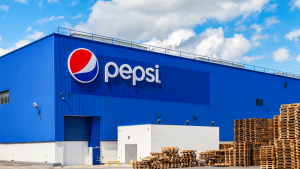A large-cap stock generally refers to any company that has a market capitalization of $10 billion or more. They represent companies with longevity, have grown in size, and maintain stable finances. Large-cap stocks are typically less volatile, have greater analyst coverage, and are more likely to offer a dividend to stockholders. In contrast, small-cap stocks tend to be start-up firms and companies that are less financially fit and prone to greater volatility. I
Therefore, investors who value stability, predictable earnings growth, and steady dividend payments should look to large-cap stocks. Over time, they can expand a portfolio while minimizing disruptions during market downturns.
Let’s look at upcoming stock predications of three large-cap stocks ready to take off in the upcoming year.
Berkshire Hathaway (BRK-A, BRK-B)

Recently, Berkshire Hathaway (NYSE:BRK-A, NYSE:BRK-B) stock was recently downgraded. This almost never happens to the holding company of Warren Buffett.
However, investment firm Edward Jones lowered its rating on Berkshire Hathaway’s stock to “hold” from “buy”. Reasons cited include the company running ahead of its financial services sector peers. Also, the firm believes Berkshire Hathaway’s continued outperformance is unlikely. BRK-B stock is up 11% this year compared to flat growth for the financial services sector.
While Edward Jones makes a case that Berkshire Hathaway will be unable to maintain its strong stock performance, investors might want to think twice before betting against Warren Buffett. This year, BRK-B stock is running neck-and-neck with the benchmark S&P 500 index. However, for most of Buffett’s investing career, which is now in its eighth decade, he has beaten the S&P 500. Further, Berkshire Hathaway’s most recent earnings were typically strong, and the company is sitting on a cash pile of $150 billion.
In the last 12 months, Berkshire’s Class B stock has gained 24%, double the S&P 500’s 12% gain during the same time period.
CrowdStrike Holdings (CRWD)

CrowdStrike Holdings (NASDAQ:CRWD) has been on a bull run this year. With momentum behind the stock, the company is catching a tailwind due to the rise in technology stocks this year.
Indeed, CRWD stock has been lifted higher by strong financial results. CrowdStrike recently reported a better-than-expected second-quarter print and raised its forward guidance. Both of which hav analysts and investors cheering.
The company reported Q2 earnings per share (EPS) of 74 cents, which was ahead of consensus forecasts of 56 cents. Revenue for Q2 came in at $731.6 million, up 37% from a year ago. In addition, that was ahead of analyst expectations of $724.1 million. The company’s free cash flow was at $188.7 million at the quarter’s end, up 39% from $135.8 million year over year (YOY).
As for guidance, CrowdStrike said it expects revenue of $775.4 million to $778 million and 74 cents in earnings for Q3 of this year, both ahead of Wall Street forecasts. CRWD stock is up 58% this year and has increased 155% over five years.
PepsiCo (PEP)

Investors will want to cease upon a big buying opportunity in beverage and snack giant PepsiCo (NASDAQ:PEP) ahead of its next earnings print on October 10.
The stock has been tumbling along with the broader market, down 7% in the last month. Pepsi’s archrival Coca-Cola (NYSE:KO) has fallen a similar amount. PEP stock is now down 10% on the year. The pullback comes despite PepsiCo reporting a string of better-than-expected earnings reports and consistently raising its full-year guidance.
Also, PepsiCo is the type of blue-chip stock that can hold its ground in the event of a recession in 2024. Not only does PEP stock look affordable trading at 28 times future earnings, but also it could make for a good defensive play should the economy contract. Plus, PepsiCo shareholders benefit from a quarterly dividend payment of $1.27 per share, giving the stock a hefty yield of 3.14%. PEP stock has increased 52% over the last five years.
On the date of publication, Joel Baglole did not have (either directly or indirectly) any positions in the securities mentioned in this article. The opinions expressed in this article are those of the writer, subject to the InvestorPlace.com Publishing Guidelines.
